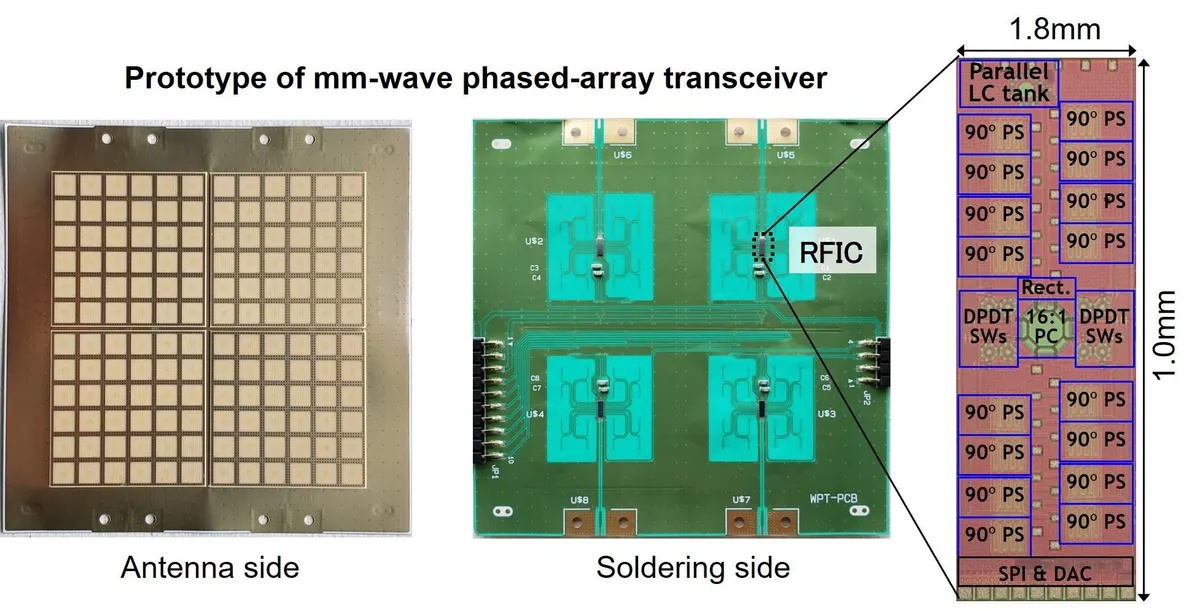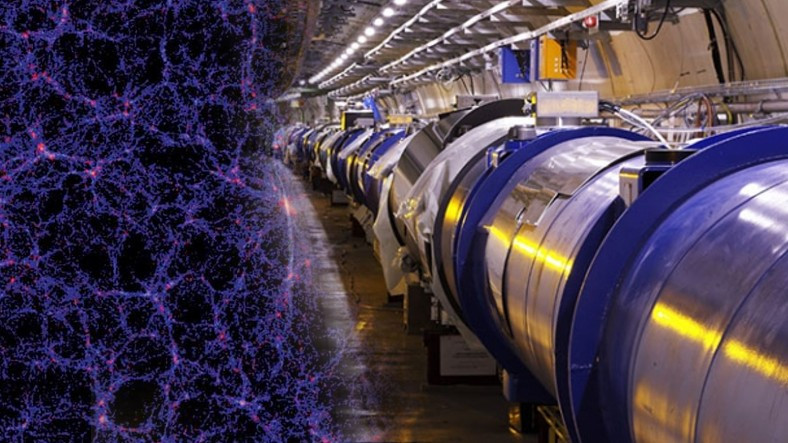The emergence of wireless networks of the 5G standard, capable of transmitting signals at high frequencies in the millimeter range, presents a number of new opportunities for wireless energy transfer technologies. And recently, researchers from the Tokyo Institute of Technology have developed a prototype of a transceiver device equipped with 64-element phased antenna arrays that can receive and transmit data, as well as convert energy into electricity. radio waves of a special, stronger “energy” signal.
Initially, this device was intended to form a component of a 5G relay station, but now researchers are considering it in terms of use in Internet of Things (IoT) devices. This will enable IoT devices to completely eliminate batteries, cables and power supplies, reducing their size, cost and maintenance costs.
On the front of such a chip is a 64-element phased array antenna divided into four groups. On the back of the device is a thin and flexible printed circuit board containing four custom-made high-frequency integrated chips, one for each sector of the antenna array. Each of the chips contains a phase shifter and a high efficiency high frequency rectifier used to control the pattern of the antenna array sector. Output and control lines transmitting the collected energy are output to the connector to which the external application device is connected.
The base station of such a chip transmits two signals, information at a frequency of 28 GHz and energy at a frequency of 24 GHz. The energy signal is rectified and supplied as direct current to the external device, enabling its operation. At the same time, the signals from the four segments of the antenna are phase aligned to increase efficiency and only then fed to the rectifier.
The information signal is converted to an intermediate frequency of 4 GHz, which facilitates its processing by the processor of the external device. The process of transmitting information consists of inverse conversion of a 4 GHz signal to a frequency of 28 GHz and radiation of the previous signal in the direction in which it was received.
Tests of the device have shown that the 64-element antenna is capable of transmitting 1 ml of power to the external device even when the transmitter direction deviates by plus or minus 45 degrees from the antenna axis. And according to calculations, an antenna with 1024 elements will be able to provide 10 milliwatts of power.
Having received the first confirmations of the functionality of the new technology, Japanese scientists are currently working on the creation of receivers with an antenna matrix, which includes a large number of elements and can operate at higher frequencies, which will allow to increase the amount of energy received. , increase the working range and information transfer rate. Source













